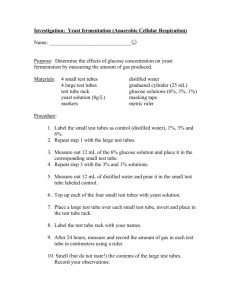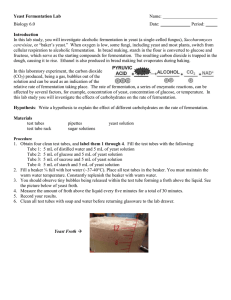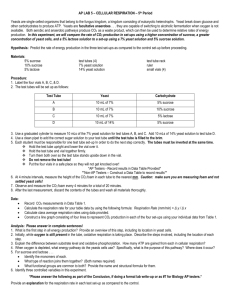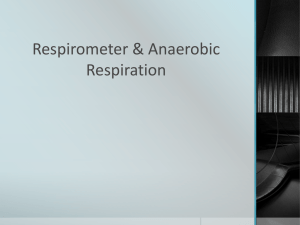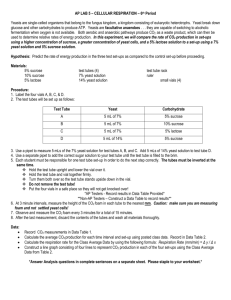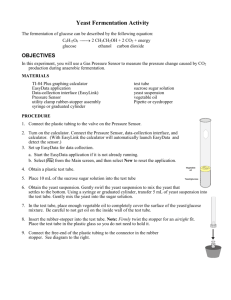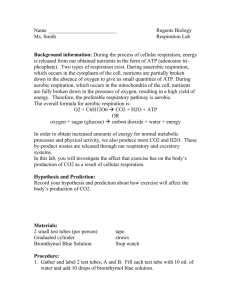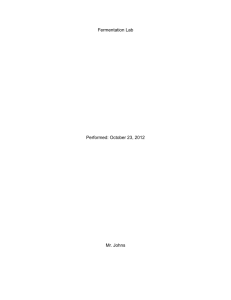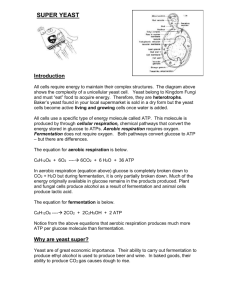lab 060 -- respirati..
advertisement
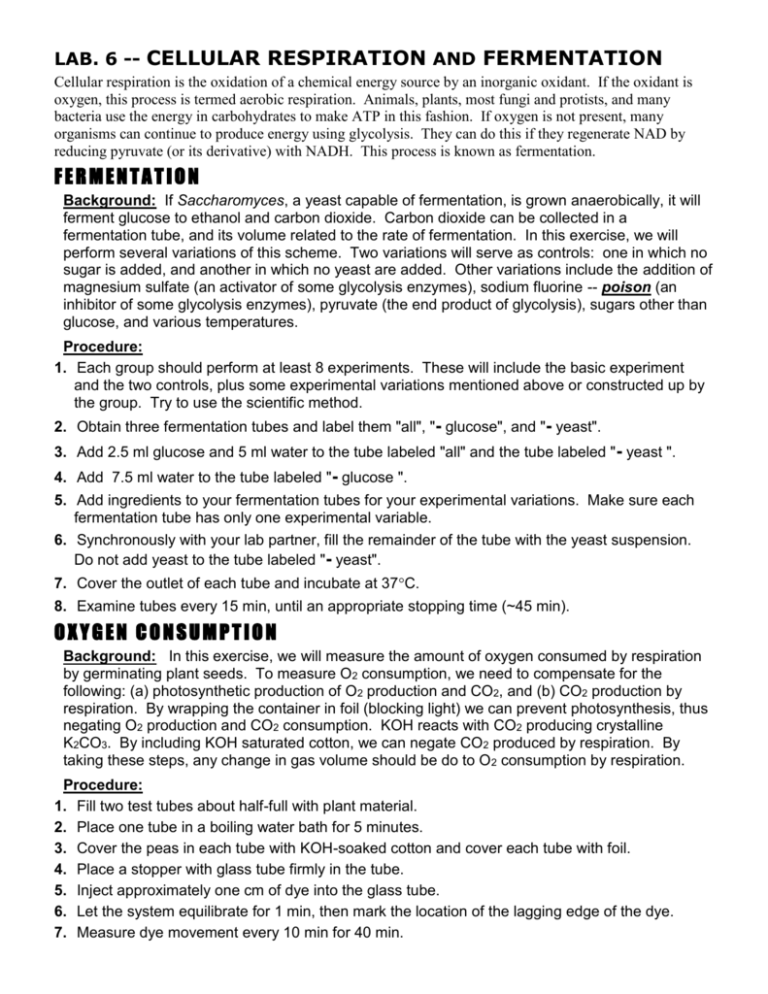
LAB. 6 -- CELLULAR RESPIRATION AND FERMENTATION Cellular respiration is the oxidation of a chemical energy source by an inorganic oxidant. If the oxidant is oxygen, this process is termed aerobic respiration. Animals, plants, most fungi and protists, and many bacteria use the energy in carbohydrates to make ATP in this fashion. If oxygen is not present, many organisms can continue to produce energy using glycolysis. They can do this if they regenerate NAD by reducing pyruvate (or its derivative) with NADH. This process is known as fermentation. FERMENTATION Background: If Saccharomyces, a yeast capable of fermentation, is grown anaerobically, it will ferment glucose to ethanol and carbon dioxide. Carbon dioxide can be collected in a fermentation tube, and its volume related to the rate of fermentation. In this exercise, we will perform several variations of this scheme. Two variations will serve as controls: one in which no sugar is added, and another in which no yeast are added. Other variations include the addition of magnesium sulfate (an activator of some glycolysis enzymes), sodium fluorine -- poison (an inhibitor of some glycolysis enzymes), pyruvate (the end product of glycolysis), sugars other than glucose, and various temperatures. Procedure: 1. Each group should perform at least 8 experiments. These will include the basic experiment and the two controls, plus some experimental variations mentioned above or constructed up by the group. Try to use the scientific method. 2. Obtain three fermentation tubes and label them "all", "- glucose", and "- yeast". 3. Add 2.5 ml glucose and 5 ml water to the tube labeled "all" and the tube labeled " - yeast ". 4. Add 7.5 ml water to the tube labeled "- glucose ". 5. Add ingredients to your fermentation tubes for your experimental variations. Make sure each fermentation tube has only one experimental variable. 6. Synchronously with your lab partner, fill the remainder of the tube with the yeast suspension. Do not add yeast to the tube labeled "- yeast". 7. Cover the outlet of each tube and incubate at 37C. 8. Examine tubes every 15 min, until an appropriate stopping time (~45 min). OXYGEN CONSUMPTION Background: In this exercise, we will measure the amount of oxygen consumed by respiration by germinating plant seeds. To measure O2 consumption, we need to compensate for the following: (a) photosynthetic production of O2 production and CO2, and (b) CO2 production by respiration. By wrapping the container in foil (blocking light) we can prevent photosynthesis, thus negating O2 production and CO2 consumption. KOH reacts with CO2 producing crystalline K2CO3. By including KOH saturated cotton, we can negate CO2 produced by respiration. By taking these steps, any change in gas volume should be do to O 2 consumption by respiration. Procedure: 1. Fill two test tubes about half-full with plant material. 2. Place one tube in a boiling water bath for 5 minutes. 3. Cover the peas in each tube with KOH-soaked cotton and cover each tube with foil. 4. Place a stopper with glass tube firmly in the tube. 5. Inject approximately one cm of dye into the glass tube. 6. Let the system equilibrate for 1 min, then mark the location of the lagging edge of the dye. 7. Measure dye movement every 10 min for 40 min. gas yeast and sugar
